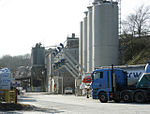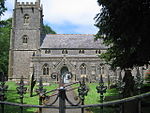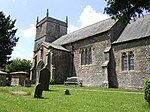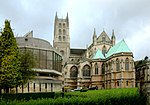Blacker's Hill
Blacker's Hill is an Iron Age hill fort at Chilcompton, 4.5 kilometres (3 mi) south west of Radstock, Somerset, England. It has been designated as a Scheduled Ancient Monument.The hill fort is roughly rectangular and is a promentary type. It covers 6 hectares (15 acres) and originally had two ramparts and two ditches, but on the west and south sides it was defended by the steep drop. In some places the ramparts survive to a considerable height but on the north east side the inner rampart and ditch have been destroyed. There are three gaps but only that on the east seems to be original.In 1999 a geophysical survey was carried out suggesting that Blackers Hill originated as a univallate structure and was then later modified, forming a developed hill fort.
Excerpt from the Wikipedia article Blacker's Hill (License: CC BY-SA 3.0, Authors).Blacker's Hill
Coalpit Lane, Mendip Chilcompton
Geographical coordinates (GPS) Address Nearby Places Show on map
Geographical coordinates (GPS)
| Latitude | Longitude |
|---|---|
| N 51.249444444444 ° | E -2.5222222222222 ° |
Address
Coalpit Lane
Coalpit Lane
BA3 4JG Mendip, Chilcompton
England, United Kingdom
Open on Google Maps









